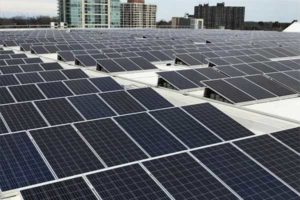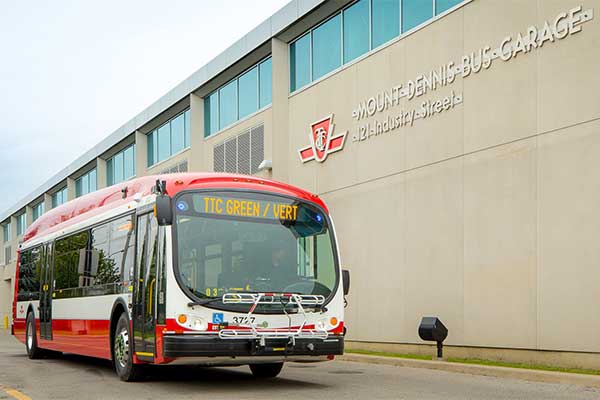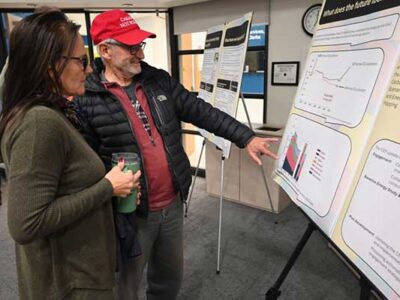Ontario’s government recently broke ground on a new Toronto-based subway line, setting the stage for a more connected, efficient, and sustainable future transit system.
This represents a key investment towards reducing the province’s greenhouse gas emissions – of which the largest share comes from transportation, at roughly 35%. Though public transportation investments tend to be inherently green – thanks to their collectivist and efficient nature – there’s more that can be done to reduce their environmental impact, which was recently demonstrated by the Toronto Transit Commission (TTC).
Announced on Solar Appreciation Day, the agency intends to equip all of its bus garages with solar panels as a part of its E-bus charging infrastructure.
The many large, flat rooftop properties owned and operated by the TTC make solar adoption a no-brainer, especially as excess power can be directed to eBus fleets for recharging via cutting-edge energy management systems. Alternatively, battery systems can store the power for use at night or as a backup system.

A photo of the solar panels on one of the four GO Stations where they are installed on the roof. (Metrolinx photo)
While the TTC’s announcement was incredibly light on details – forgoing a timeline, expected generation capacity, as well as cost – its other environmental pilots, including the McNicoll solar initiative, have demonstrated the agency’s commitment to adopting sustainable technologies.
According to the TTC, certain garages “may be able to generate as much energy as they consume,” which will help reduce the burden on Ontario’s electrical grid during peak hours. This will be particularly important in the coming years as some of the province’s non-emitting nuclear capacity goes offline – either for refurbishment or permanent shutdown – and is replaced by fossil gas.
Metrolinx – Ontario’s regional transit agency – has also begun taking steps towards greater solar integration at its transit hubs. Panels have already been installed at Ajax GO, Erindale GO, Oakville GO, and Clarkson GO and are estimated to have saved nearly $2 million in energy costs to date – as well as over 250 tonnes of greenhouse gas emissions. Over the anticipated 25-30 year lifespan of the solar panels, Metrolinx expects to save between $7 and $8.3 million – capital which could then go towards further transit investment.
The agency plans to continue to deploy solar panels on transit stations and suggests that installations will be able to mitigate up to a third of each transit hub’s energy consumption.
The best part of these installations is that Metrolinx and the TTC are taking economically unproductive land and transforming it into a public good that frees up capital for other important projects. Plus, the clean energy produced can help produce a more flexible operating budget, easing the burden of funding constraints.
Transit agencies have begun adopting solar, but more needs to be done across the board to ensure ambitious emission reduction targets can be met in the transportation and energy sectors.















Comments